Introduction
Applied Behavior Analysis (ABA) therapy has emerged as a cornerstone in the treatment of autism and other developmental disorders, offering a scientifically validated approach to understanding and improving socially significant behaviors. This method, grounded in behavioral principles and data-driven strategies, aims to foster positive changes that enhance the quality of life for individuals and their families. The recent updates to the ABA Practice Guidelines underscore the necessity of high-quality implementation to ensure the efficacy of these interventions.
Central to ABA therapy are its core principles—reinforcement, punishment, and extinction—each playing a vital role in shaping behavior. Through structured methodologies like Discrete Trial Training and Natural Environment Training, ABA therapy not only teaches essential skills but also ensures their application in real-world settings. Furthermore, Functional Behavior Assessment tailors interventions to the unique needs of each individual, promoting holistic well-being.
The ultimate goal of ABA therapy extends beyond mere behavior modification; it seeks to build independence and empower individuals to navigate their environments successfully. By addressing communication, social interactions, and daily living skills, ABA therapy supports the mental health and equity of children with disabilities, ensuring they have the opportunity to thrive. This comprehensive approach is not just about the individual but also about fostering a supportive community that recognizes the strengths and contributions of every child.
What is ABA Therapy?
Applied Behavior Analysis (ABA) is a scientifically validated method that emphasizes understanding and enhancing actions that hold social significance. By utilizing concepts of learning theory, ABA intervention promotes positive conduct modifications among individuals, especially those with autism and other developmental disorders. This method is marked by its systematic use of interventions grounded in behavioral principles, highlighting the essential role of data-driven strategies to ensure effectiveness.
The recent release of the third edition of the Applied Behavior Analysis (ABA) Practice Guidelines for the Treatment of Autism Spectrum Disorder underscores the importance of quality implementation. “ABA is a highly effective treatment for autism. But it has to be correctly implemented at the highest quality,” stated Lorri Unumb, chief executive officer of the Council of Autism Service Providers (CASP). These guidelines aim to standardize care across insurers, regulatory bodies, consumers, practitioners, and other stakeholders.
Integrating ABA interventions into the lives of young individuals with disabilities, including those with simultaneous emotional and conduct issues, enhances their participation in significant daily activities. As Dr. David R. Offord, a renowned child psychiatrist, aptly mentioned, “Engaged, peaceful and well-supported participation of children and youth with disabilities in the major school, home, and leisure domains of their lives is a fundamental determinant of mental health.” This holistic approach not only addresses the unmet needs of these children but also recognizes the strengths they contribute to their communities, thereby fostering equity and reducing chronic stress sources.
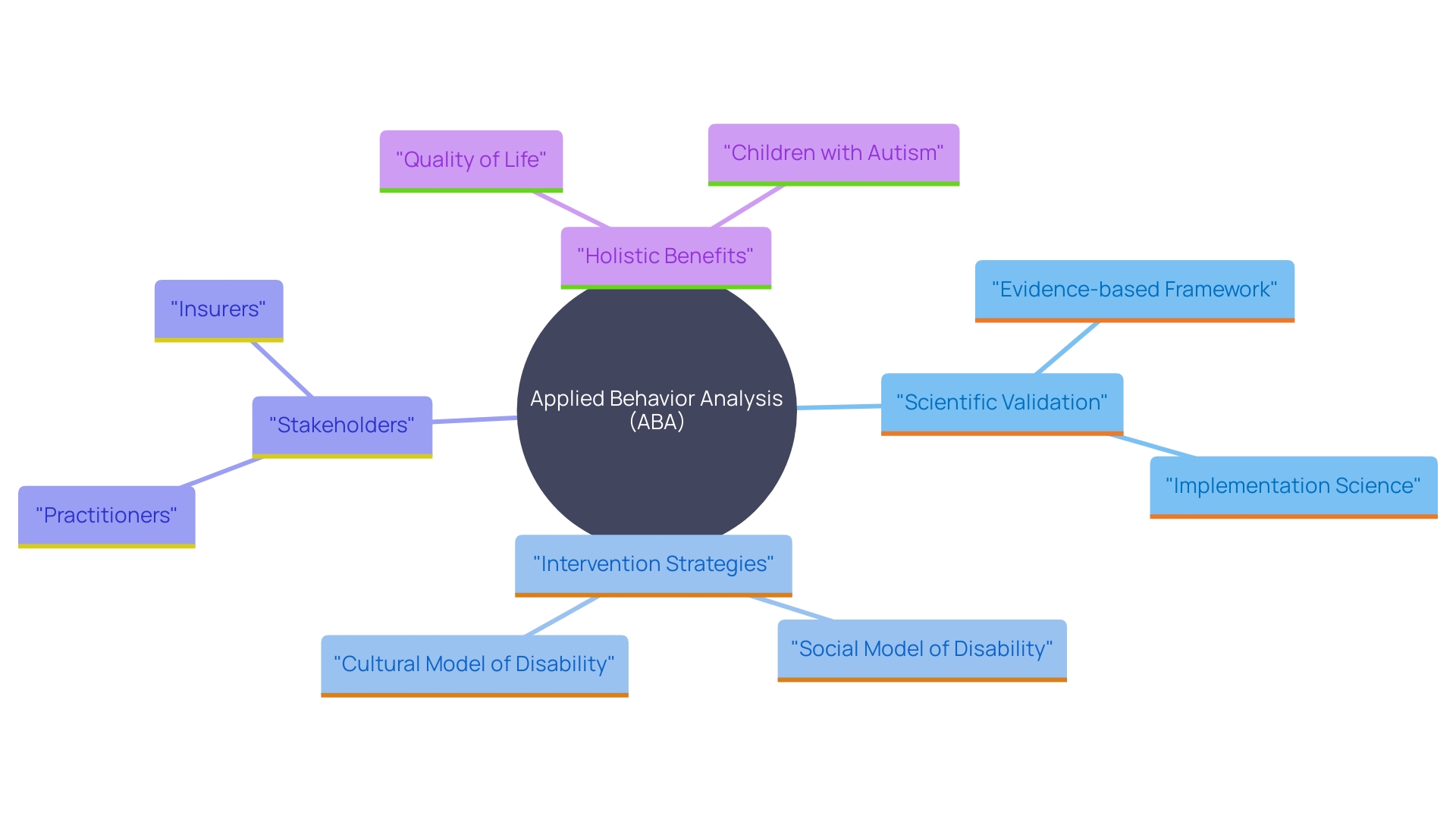
Key Principles of ABA Therapy
Applied Behavior Analysis (ABA) treatment functions on several fundamental principles, including reinforcement, punishment, and extinction, to promote significant changes in actions. Reinforcement is a technique that promotes desired actions by providing rewards, which can vary from verbal praise to physical items. This principle is central in ABA therapy, as it aids in developing positive conduct patterns. On the other hand, punishment seeks to decrease unwanted actions by enforcing consequences. While this can be effective, it must be used judiciously and ethically to avoid negative impacts on the individual.
Extinction is another key principle, which involves the removal of reinforcers that sustain a problematic action. Over time, this leads to a decrease in that action. Comprehending and accurately utilizing these principles enable caregivers and professionals to influence actions effectively. As Dr. Jan Blacher from UC Riverside emphasizes, the comprehension of autism has progressed notably, which highlights the significance of personalized and flexible intervention approaches in ABA. The recent release of the third edition of the ABA Practice Guidelines by the Council of Autism Service Providers (CASP) further emphasizes the need for high-quality implementation of these principles to ensure the best outcomes for individuals with autism.
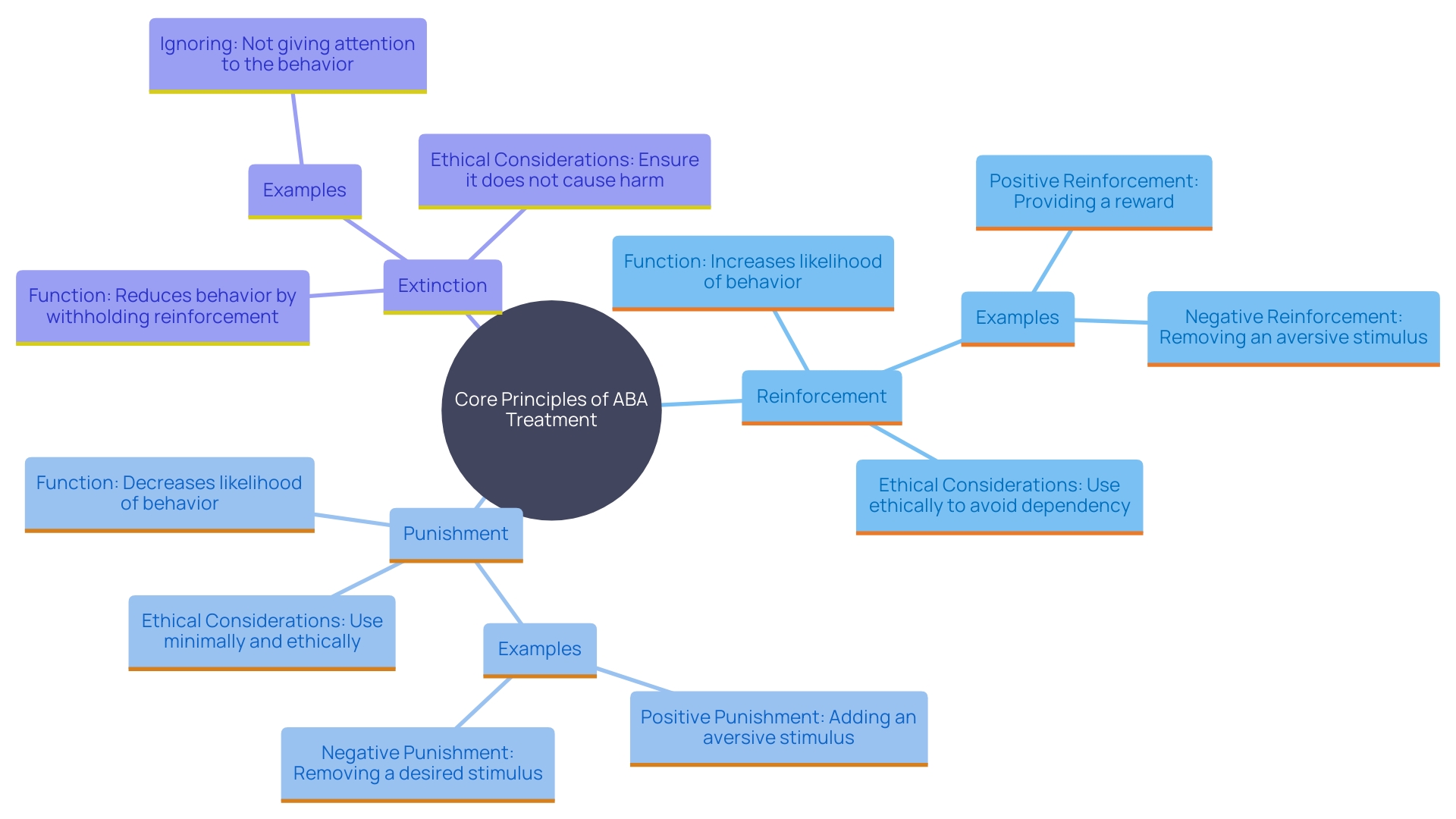
Goals of ABA Therapy
ABA therapy is designed to improve the quality of life for individuals by teaching vital skills and reducing challenging behaviors. Key areas of focus include enhancing communication, fostering social interactions, boosting academic performance, and developing daily living skills. The ultimate aim is to promote independence and empower individuals to navigate their environments more effectively.
Dr. David (Dan) R. Offord, a renowned psychiatrist for young individuals, emphasized the importance of fair and supportive participation for children with disabilities. He compared growing up in Canada to a race, expressing that a fair competition is essential for all young people. 'Engaged, peaceful, and well-supported participation in school, home, and leisure activities is crucial for the mental health and equity of youth with disabilities.'. This approach acknowledges both their unmet needs and the assets they bring to their communities. Ensuring that caregivers have the necessary resources to support their offspring's healthy development is fundamental for fostering a supportive environment.
The organized method of ABA intervention starts with a comprehensive evaluation by a Board Certified Behavior Analyst (BCBA), followed by goal establishment based on the individual's specific requirements. Progress is consistently monitored, and strategies are adjusted to ensure continued benefits. Flexibility is key, as families have different needs and schedules, making it essential to provide support that fits their lifestyle.
The importance of a supportive community cannot be overstated. Autistic children and youth with co-occurring emotional and conduct issues (EBP) are especially at risk of exclusion from meaningful social participation. By addressing their unique needs and reducing chronic stress sources, we can help integrate them into their communities, ensuring a fair race for all.
Common ABA Therapy Techniques
Numerous vital methods constitute the foundation of ABA treatment, each aimed at tackling particular elements of conduct and education. Discrete Trial Training (DTT) breaks down skills into small, manageable steps, making it easier for individuals to grasp and master new concepts. This method has been particularly effective in teaching foundational skills, such as communication and social interaction, by providing clear, structured learning opportunities.
Natural Environment Training (NET), on the other hand, emphasizes the importance of teaching skills within everyday settings. This approach ensures that individuals can apply what they learn in real-world situations, enhancing their ability to navigate daily life more independently. By using familiar environments, NET helps in generalizing skills beyond the therapy sessions.
Functional Behavior Assessment (FBA) is another essential element, concentrating on comprehending the underlying reasons behind specific actions. This assessment guides the development of targeted interventions, ensuring that strategies are tailored to meet the unique needs of each individual. FBA's personalized approach not only addresses problematic behaviors but also promotes positive behavior changes, contributing to overall well-being.
Dr. David Offord, a renowned psychiatrist for youth, emphasized the importance of recognizing both the unmet needs and the strengths that individuals with disabilities bring to their communities. By reducing chronic sources of stress and providing caregivers with the necessary resources, we can support the healthy development of young individuals and their families. This holistic approach aligns with the principles of ABA practices, which aims to create a fair and supportive environment for all children, ensuring they have the opportunity to thrive.
Benefits of ABA Therapy
ABA intervention provides many advantages that go beyond merely the person receiving treatment. It significantly improves communication skills, enhances social interactions, and reduces problematic behaviors. This structured support leads to substantial gains in learning and independence. According to recently updated guidelines by the Council of Autism Service Providers, ABA therapy is highly effective when correctly implemented at the highest quality. This ensures that young people are not only learning but thriving in various aspects of their lives.
Families often report increased confidence in their offspring's abilities and a deeper understanding of how to support their development. A thorough assessment by a Board Certified Behavior Analyst (BCBA) initiates the therapy, setting specific, measurable goals and consistently monitoring progress. This adaptable method addresses the distinct requirements and timetables of every family, highlighting that it concerns not only the young one but the family collectively.
Dr. David (Dan) R. Offord, a renowned psychiatrist for young people, emphasized the importance of making the race fair for all youth, including those with disabilities. Engaged, peaceful, and well-supported participation in school, home, and leisure activities is crucial for mental health and equity. This holistic approach recognizes both unmet needs and the strengths children bring to their communities, reducing chronic stress and ensuring caregivers have the resources necessary to support their children's healthy development and family well-being.
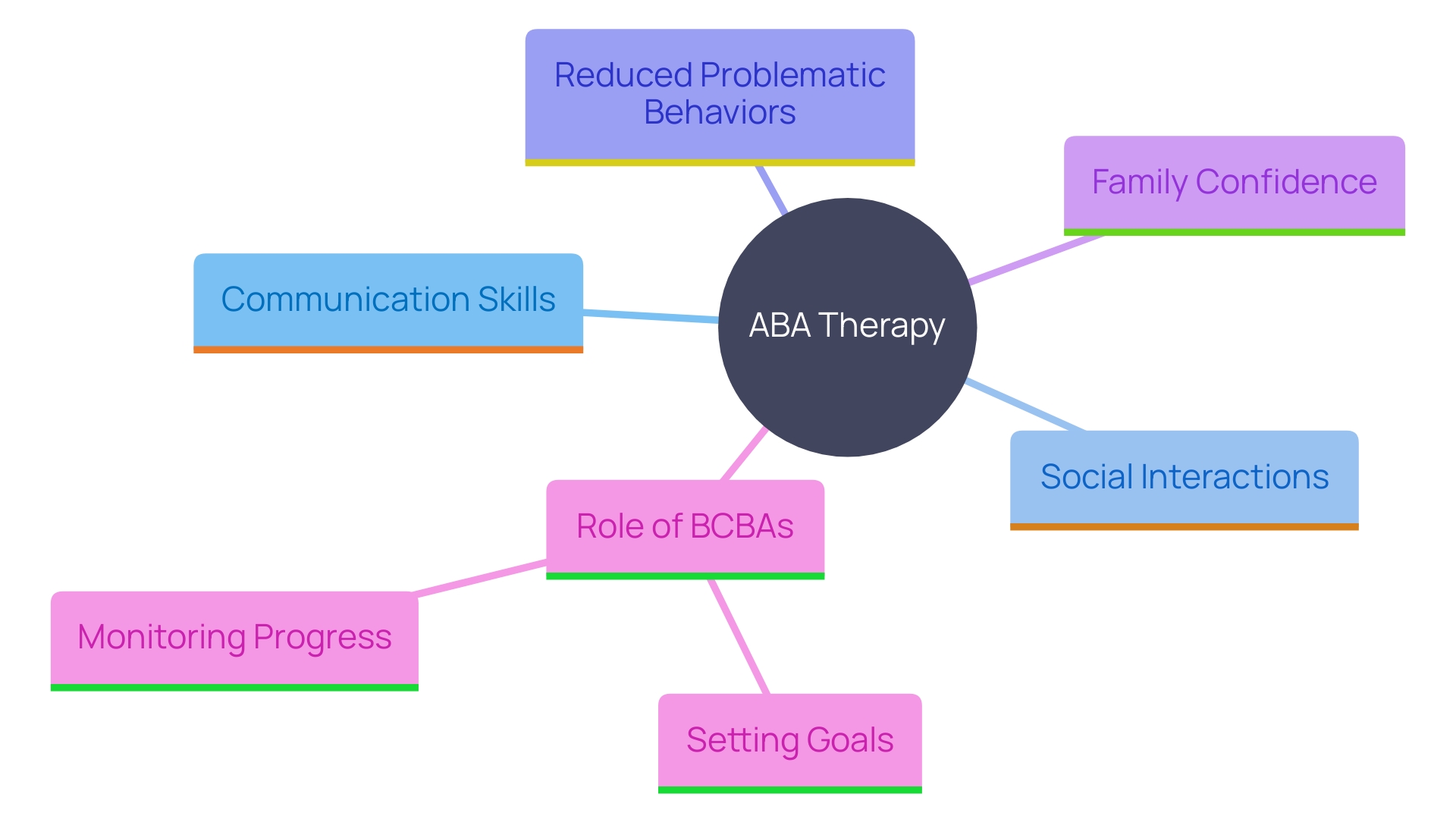
Evidence Supporting ABA Therapy
'ABA intervention, or Applied Behavior Analysis, has long been recognized for its effectiveness in enhancing behaviors and skills in individuals with autism and other developmental disorders.'. Rooted in decades of rigorous research, ABA approaches utilize evidence-based techniques to foster positive behavioral changes and skill development. Notably, the Council of Autism Service Providers (CASP) has recently updated the Applied Behavior Analysis Practice Guidelines for the Treatment of Autism Spectrum Disorder, underscoring the necessity for high-quality implementation of ABA practices.
Research has consistently shown the lasting effect of ABA treatment. For instance, randomized controlled trials and quasi-experimental studies have shown significant improvements in communication, social interactions, and adaptive behaviors among participants. The new guidelines by CASP aim to standardize these high-quality practices, ensuring that individuals receive the most effective treatment possible.
As Dr. Jan Blacher of UC Riverside points out, the rising prevalence of autism diagnoses—from 1 in 2,500 individuals to 1 in 36 today—reflects a broader understanding and identification of autism spectrum disorders. This increasing acknowledgment emphasizes the significance of interventions such as ABA methods, which must be customized to address the varied requirements of individuals with autism. The evolving landscape of autism research and intervention continues to emphasize the critical role of early and correctly implemented ABA practices in producing meaningful, long-lasting outcomes.
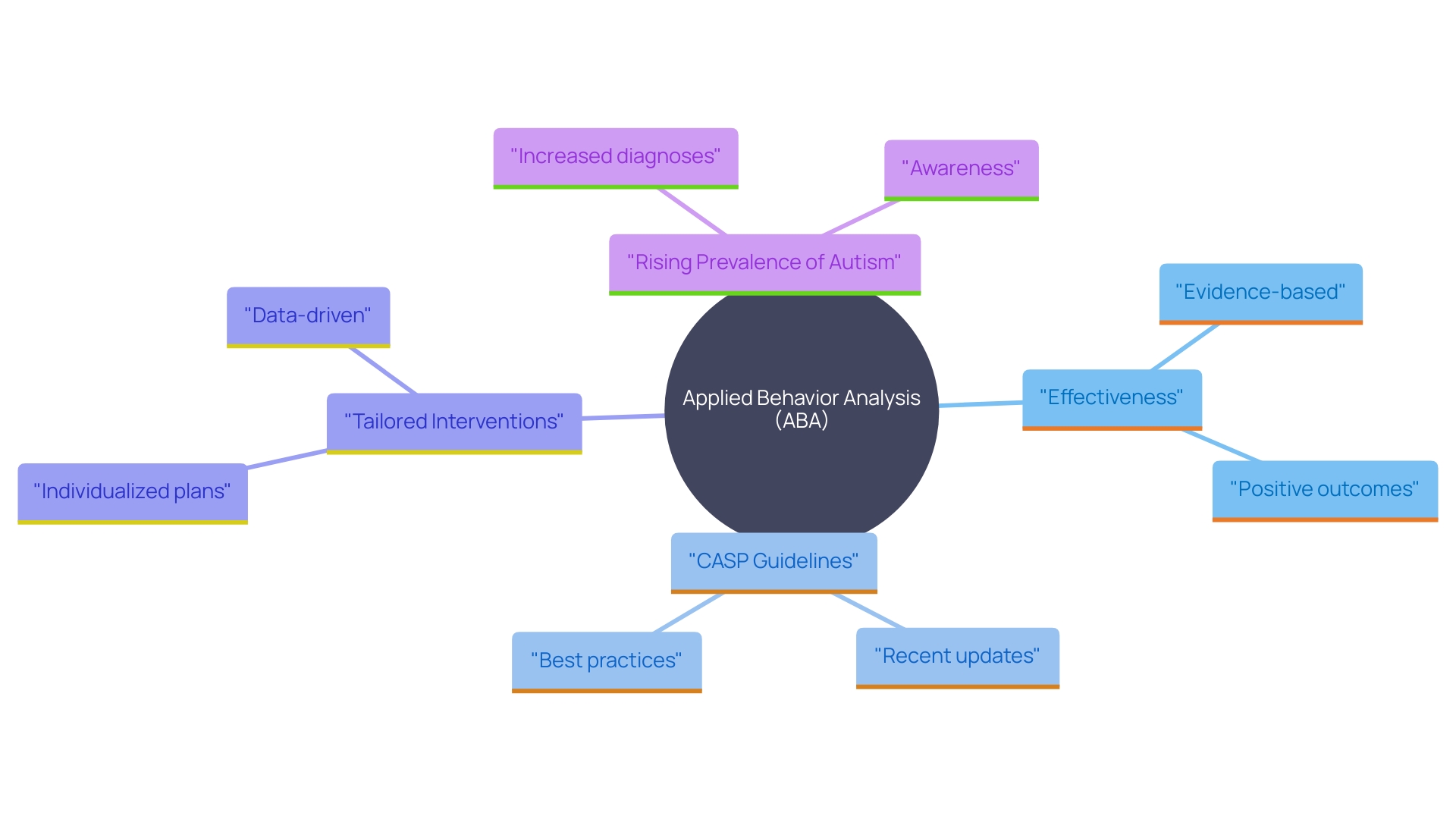
Addressing Controversies and Misconceptions
'Despite its effectiveness, ABA treatment has faced criticism and misconceptions.'. Some argue that it may be too rigid or focused solely on compliance. However, modern approaches to ABA emphasize the importance of individualization, respect, and collaboration with families. This aligns with the new guidelines from the Council of Autism Service Providers, which stress the need for high-quality, correctly implemented ABA standards. Recognizing autism's growing prevalence and diverse presentations, experts like Dr. Jan Blacher highlight the need for nuanced interventions. Understanding these nuances can help dispel myths and promote a more informed perspective on ABA therapy. As Dr. David Offord once stated, "I do not mind if my kids are in a race as long as the race is fair." Ensuring that ABA practices are inclusive and equitable is crucial for making the race fair for all children.
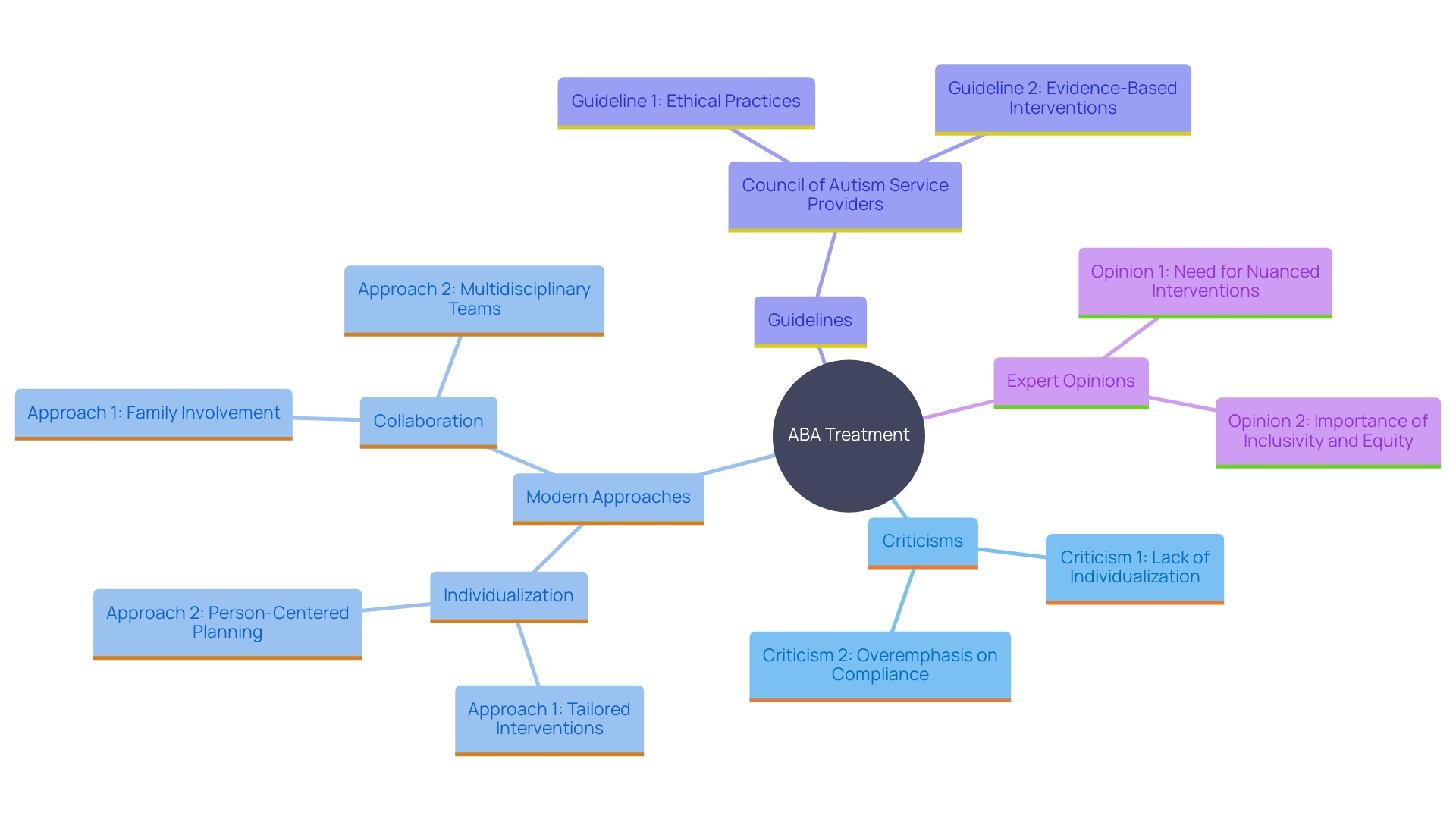
Conclusion
Applied Behavior Analysis (ABA) therapy is a vital tool for supporting individuals with autism and other developmental disorders. By focusing on core principles such as reinforcement, punishment, and extinction, ABA promotes meaningful behavior changes that enhance communication, social skills, and daily living abilities. This individualized approach empowers children to thrive in their environments, fostering greater independence and community engagement.
The goals of ABA therapy extend beyond behavior modification; they aim to create inclusive opportunities for children with disabilities. Techniques like Discrete Trial Training and Natural Environment Training ensure that skills learned in therapy are applicable in real-life situations. This holistic approach is crucial for improving mental health and promoting equity, recognizing both the challenges and strengths of these children.
Research consistently supports the effectiveness of ABA therapy in improving vital skills and reducing problematic behaviors. Recent updates to the ABA Practice Guidelines emphasize the necessity of high-quality implementation, ensuring ethical and effective interventions. Addressing misconceptions about ABA is important, as modern practices prioritize family collaboration and inclusivity, ensuring that all children have fair opportunities for success.
Ultimately, ABA therapy enhances the lives of individuals with autism while fostering supportive communities. By recognizing and nurturing each child’s unique strengths, ABA paves the way for a brighter, more inclusive future where every child can thrive.




